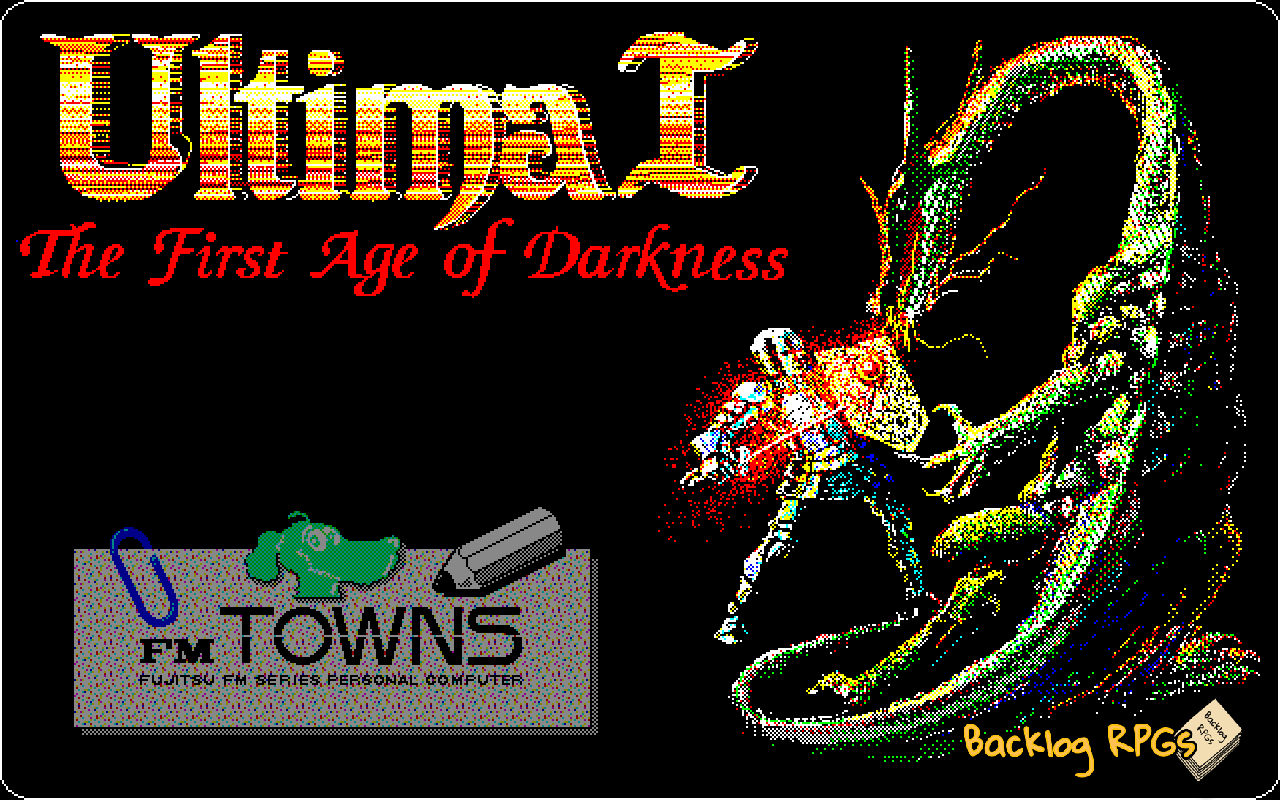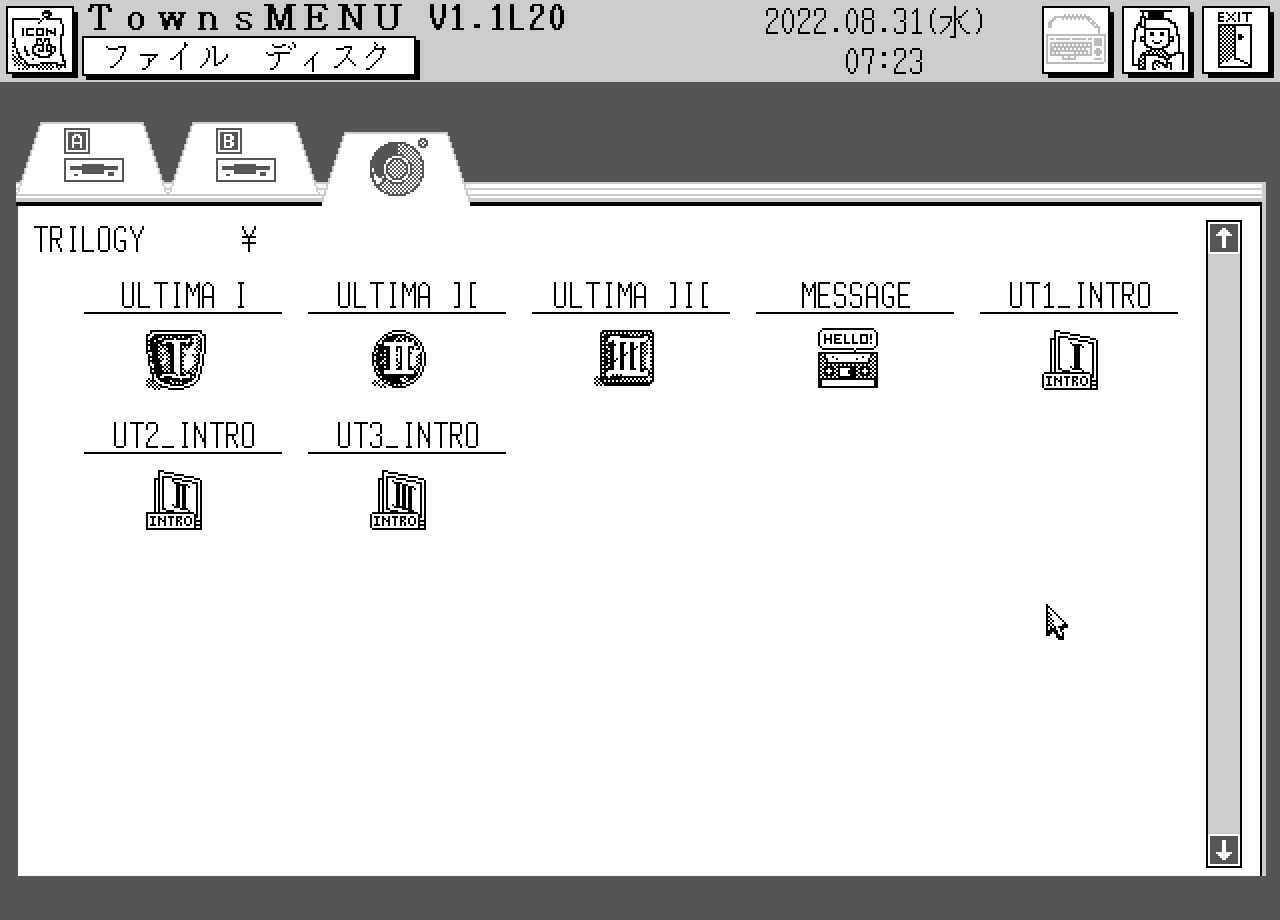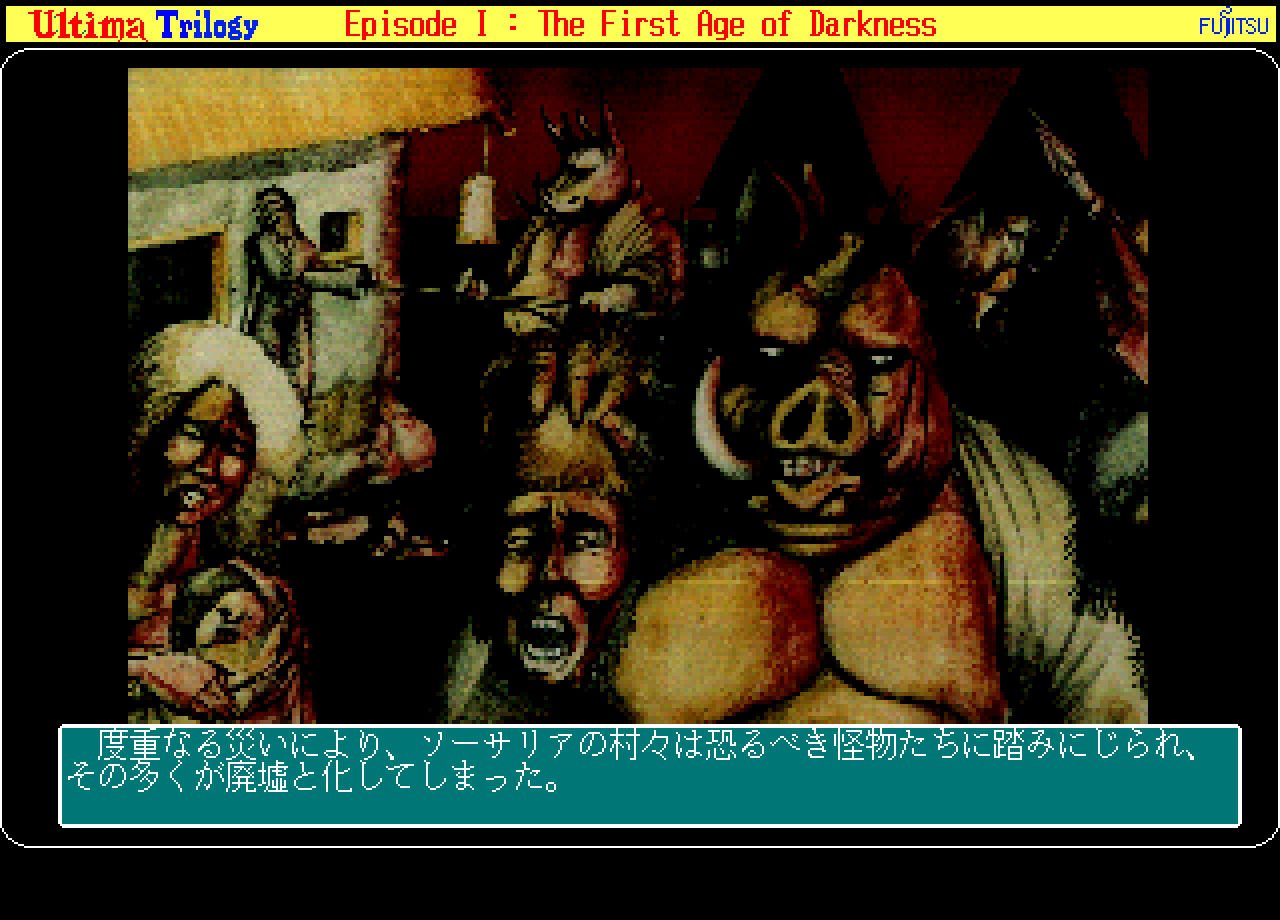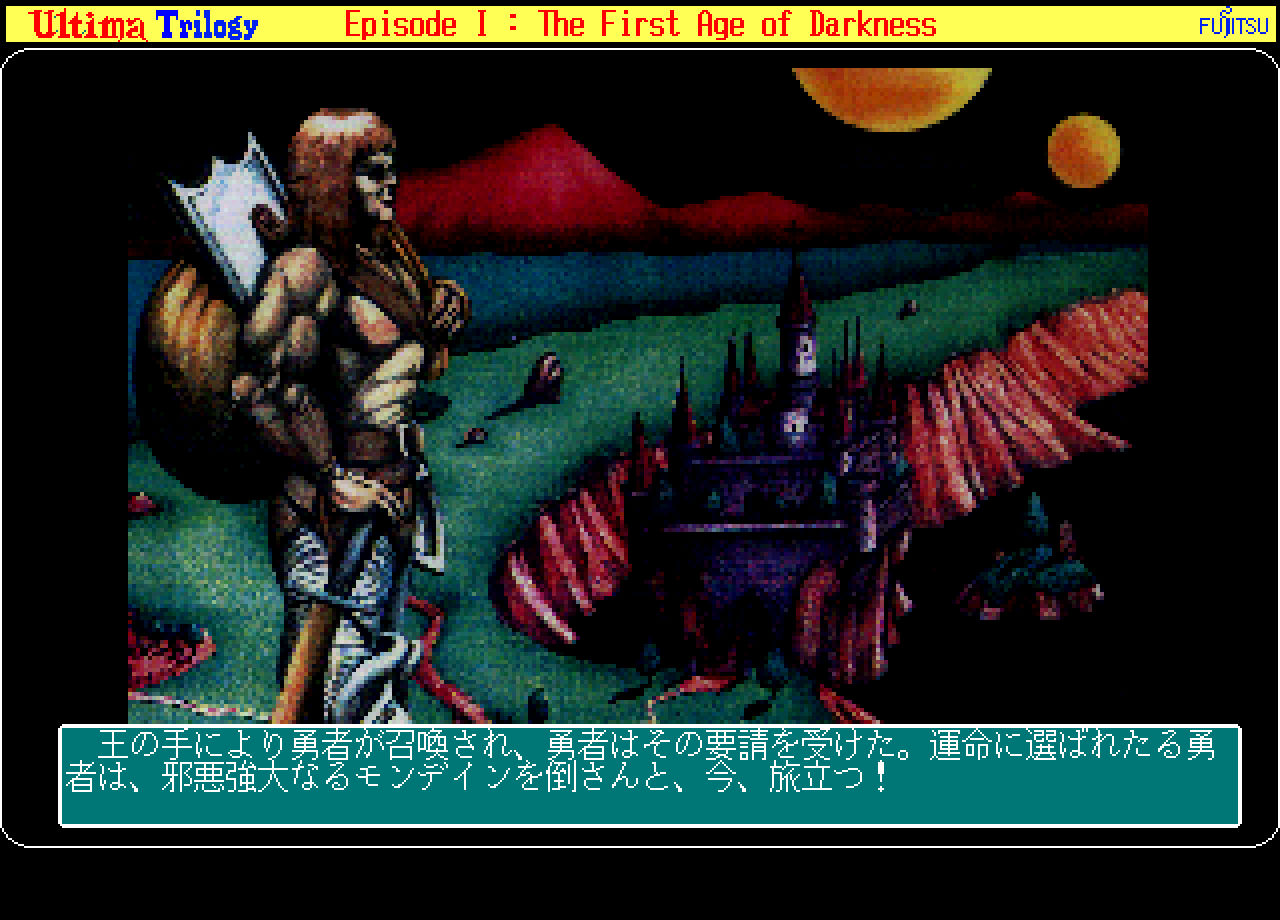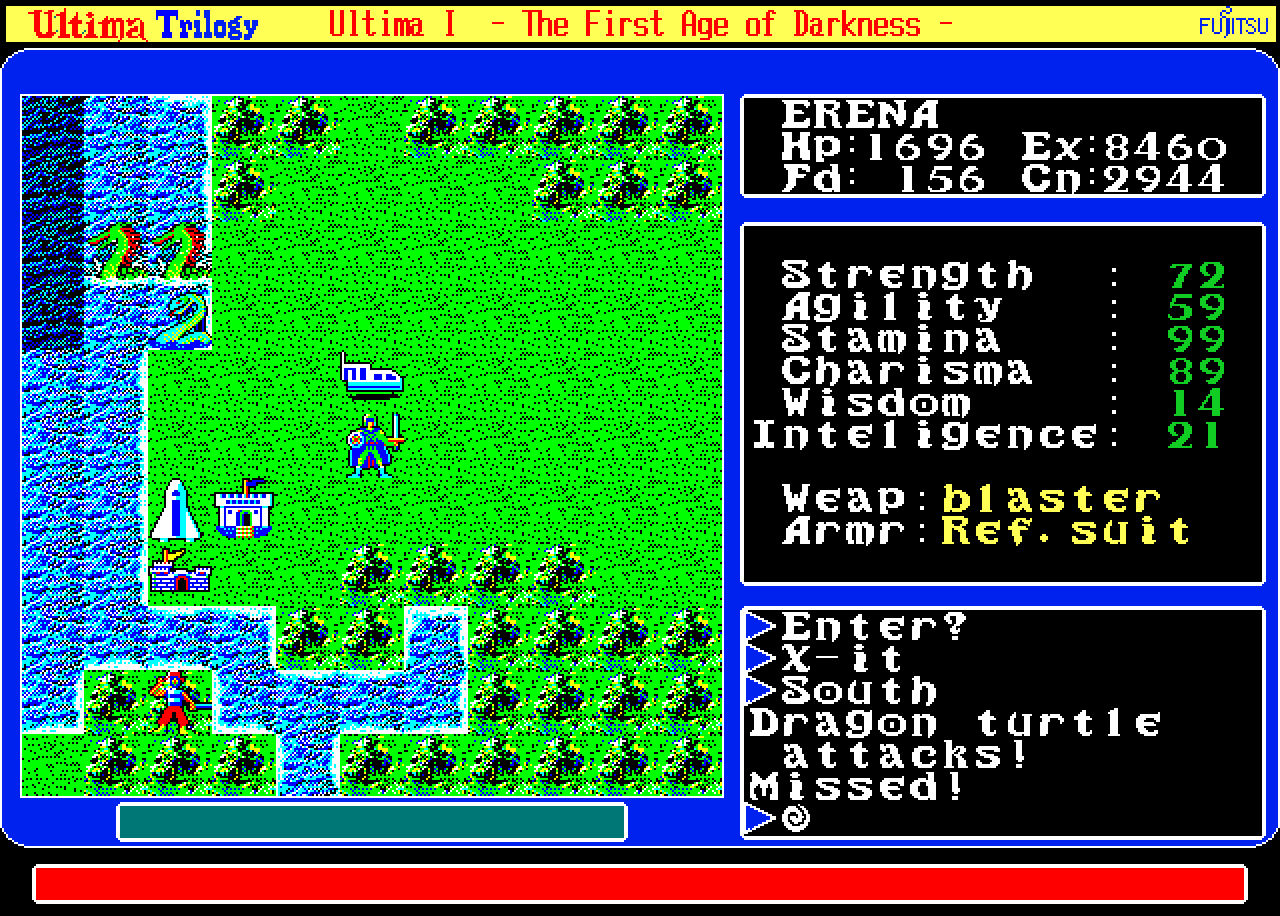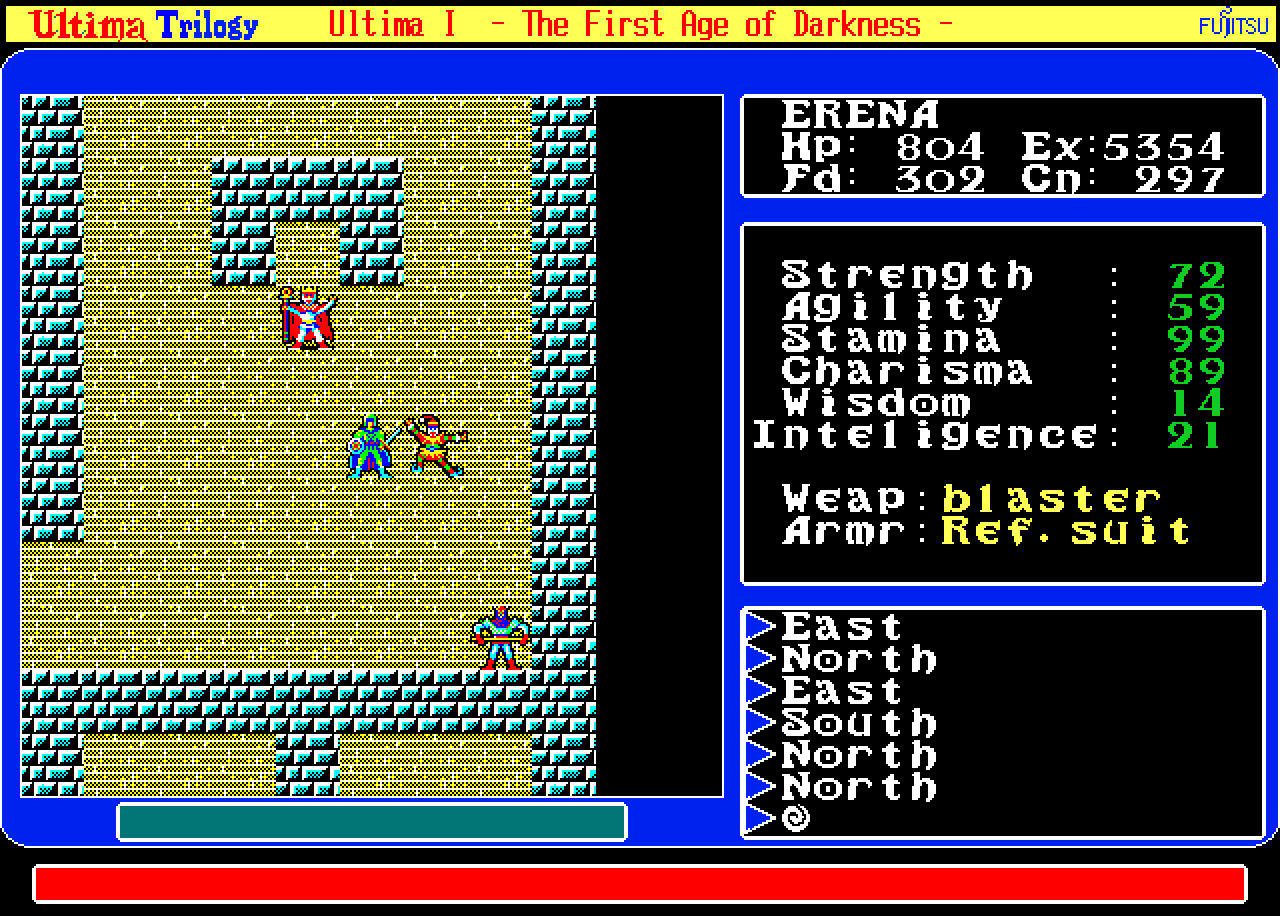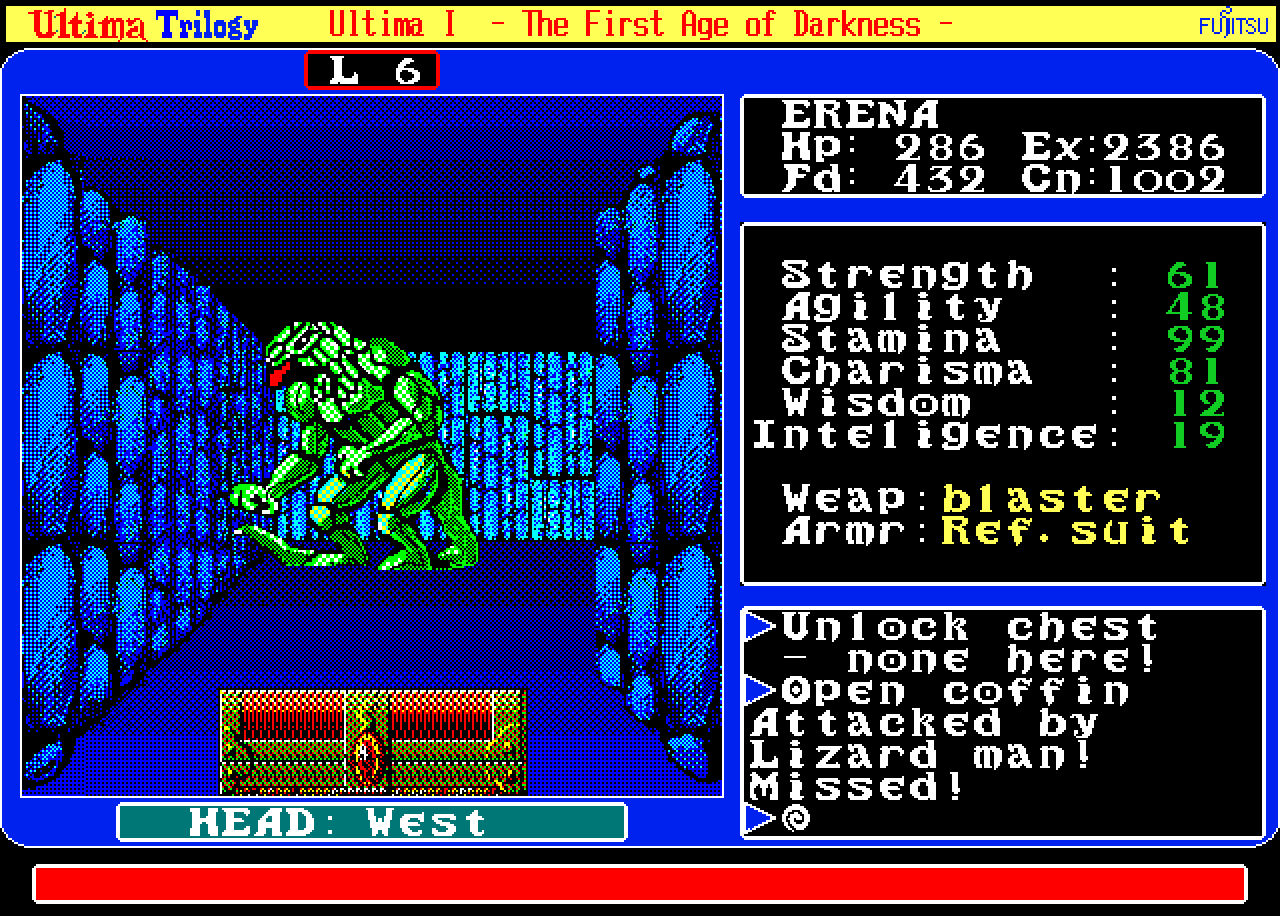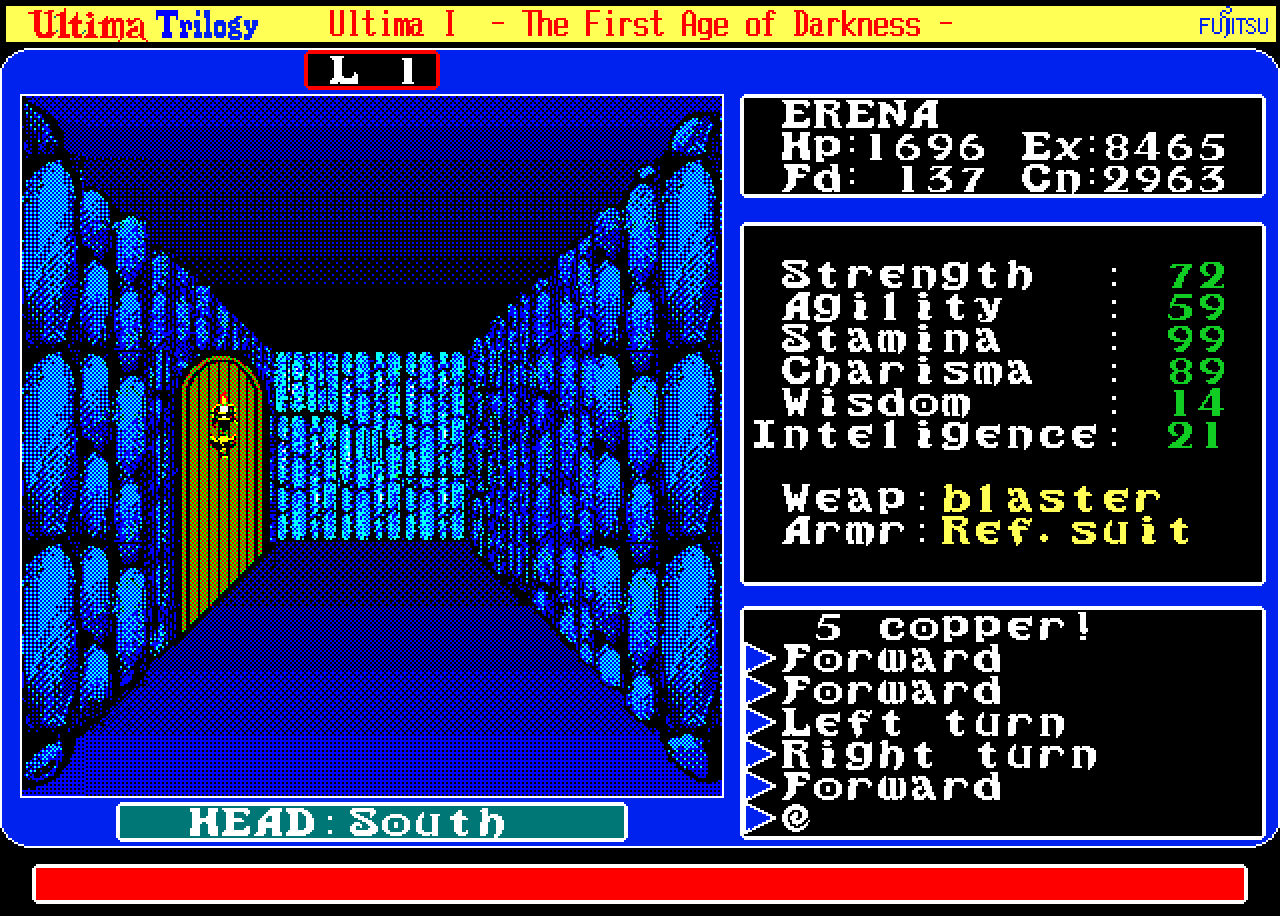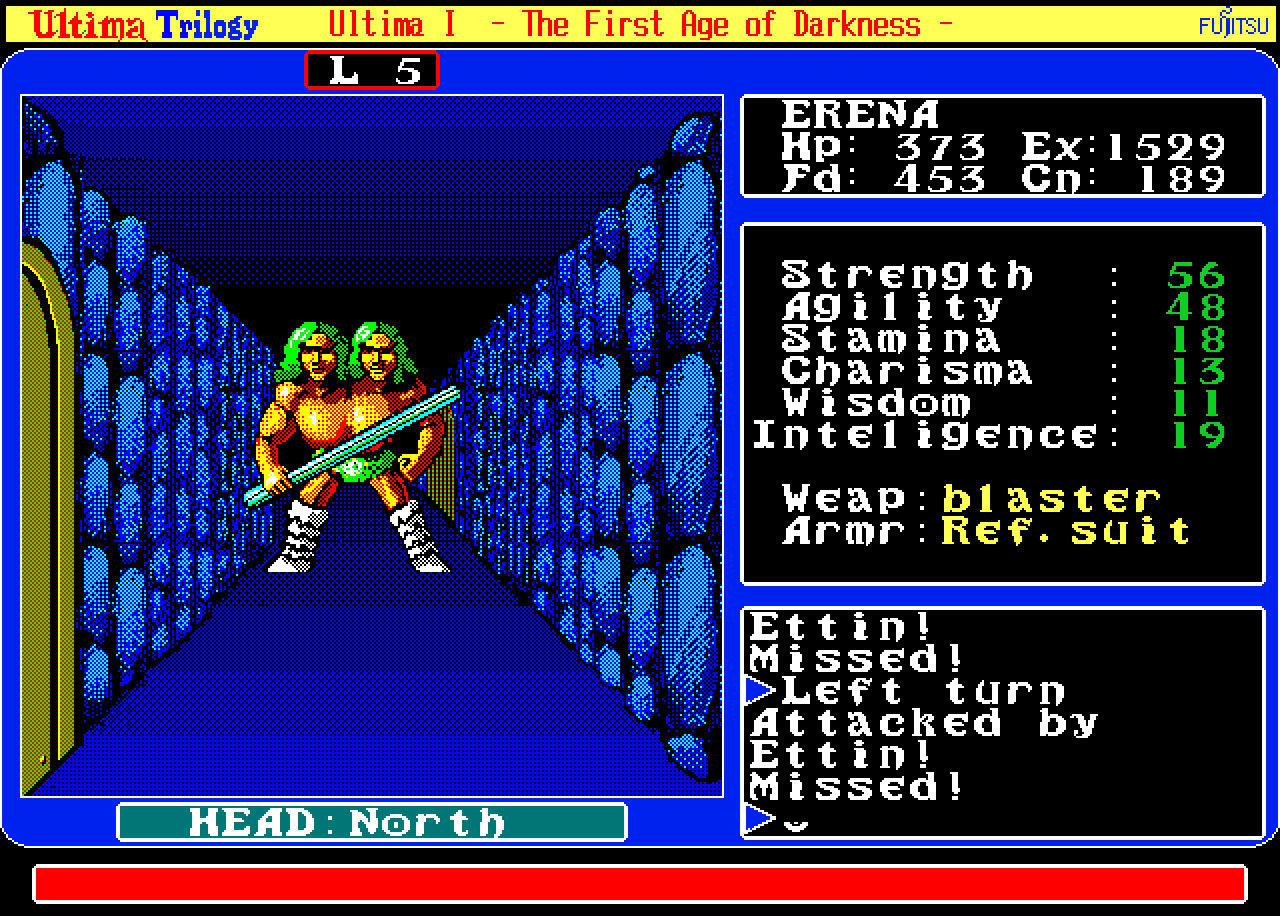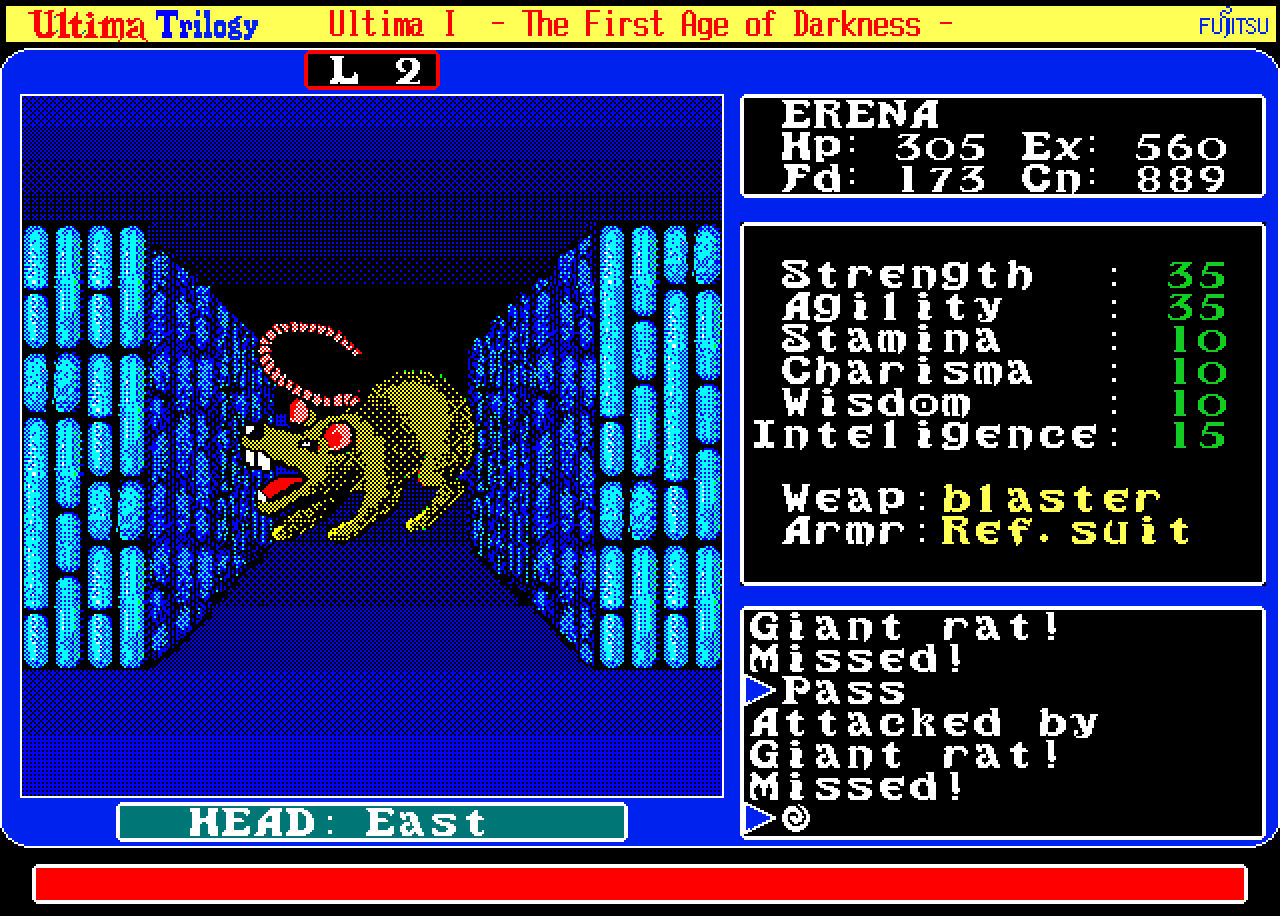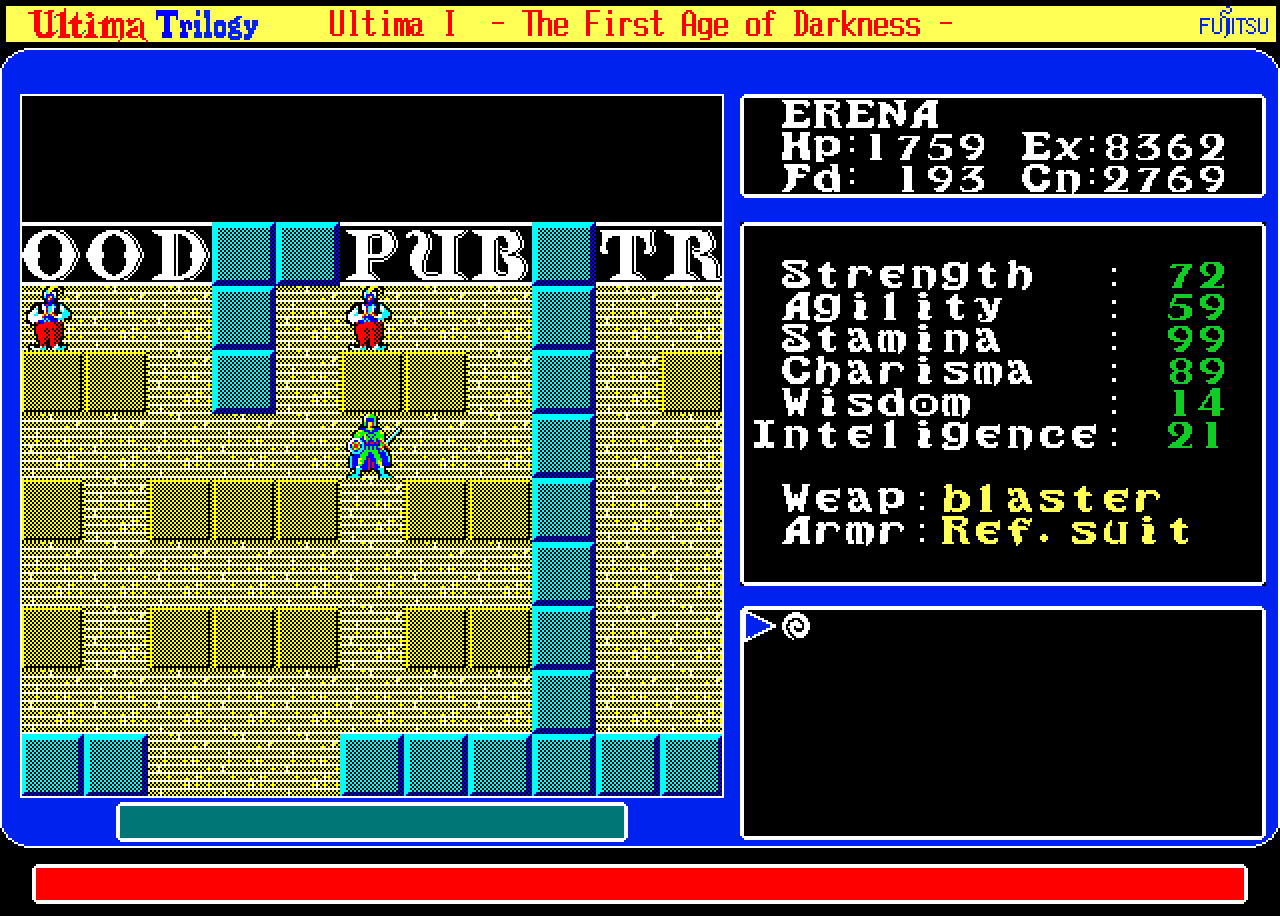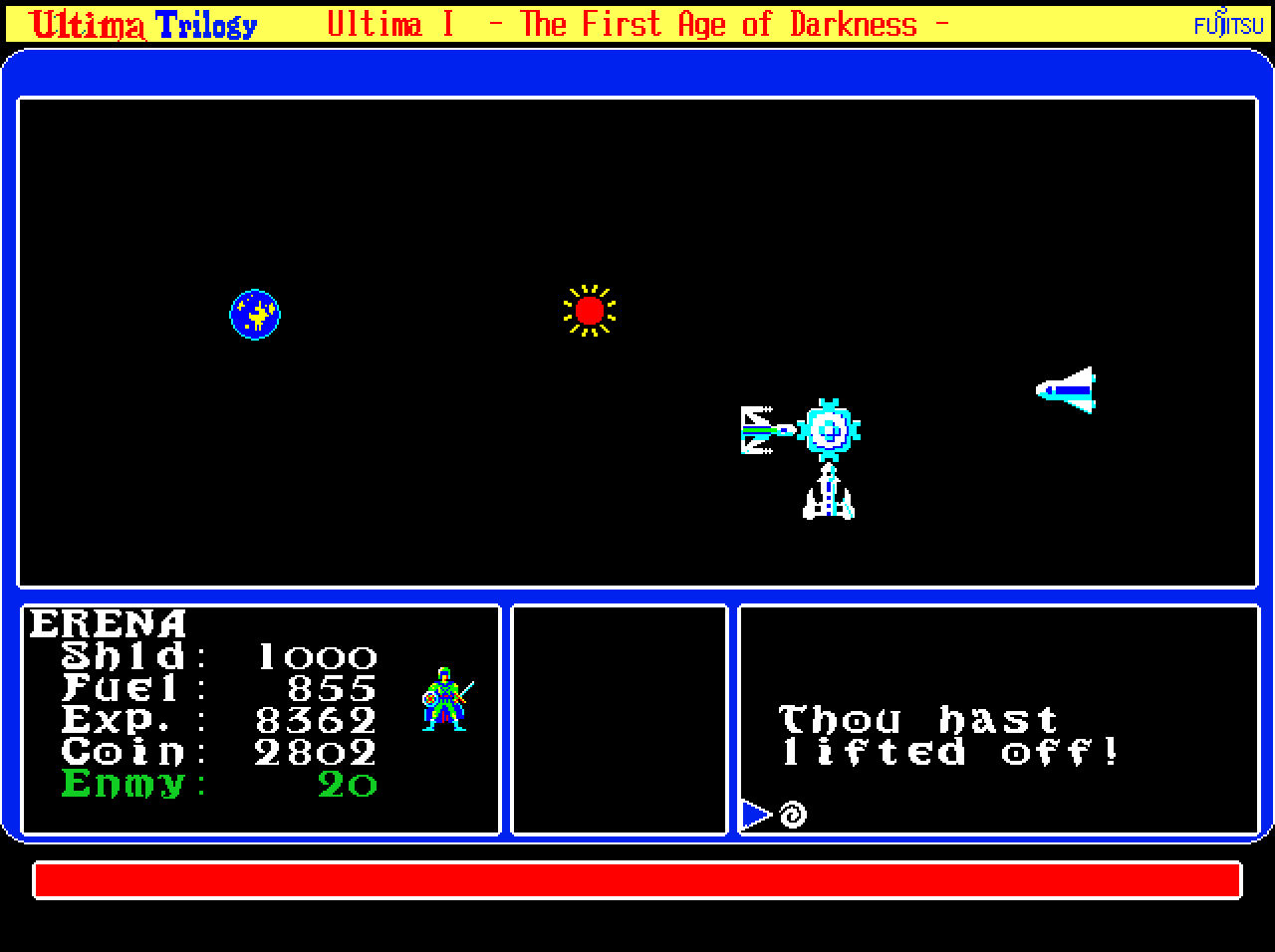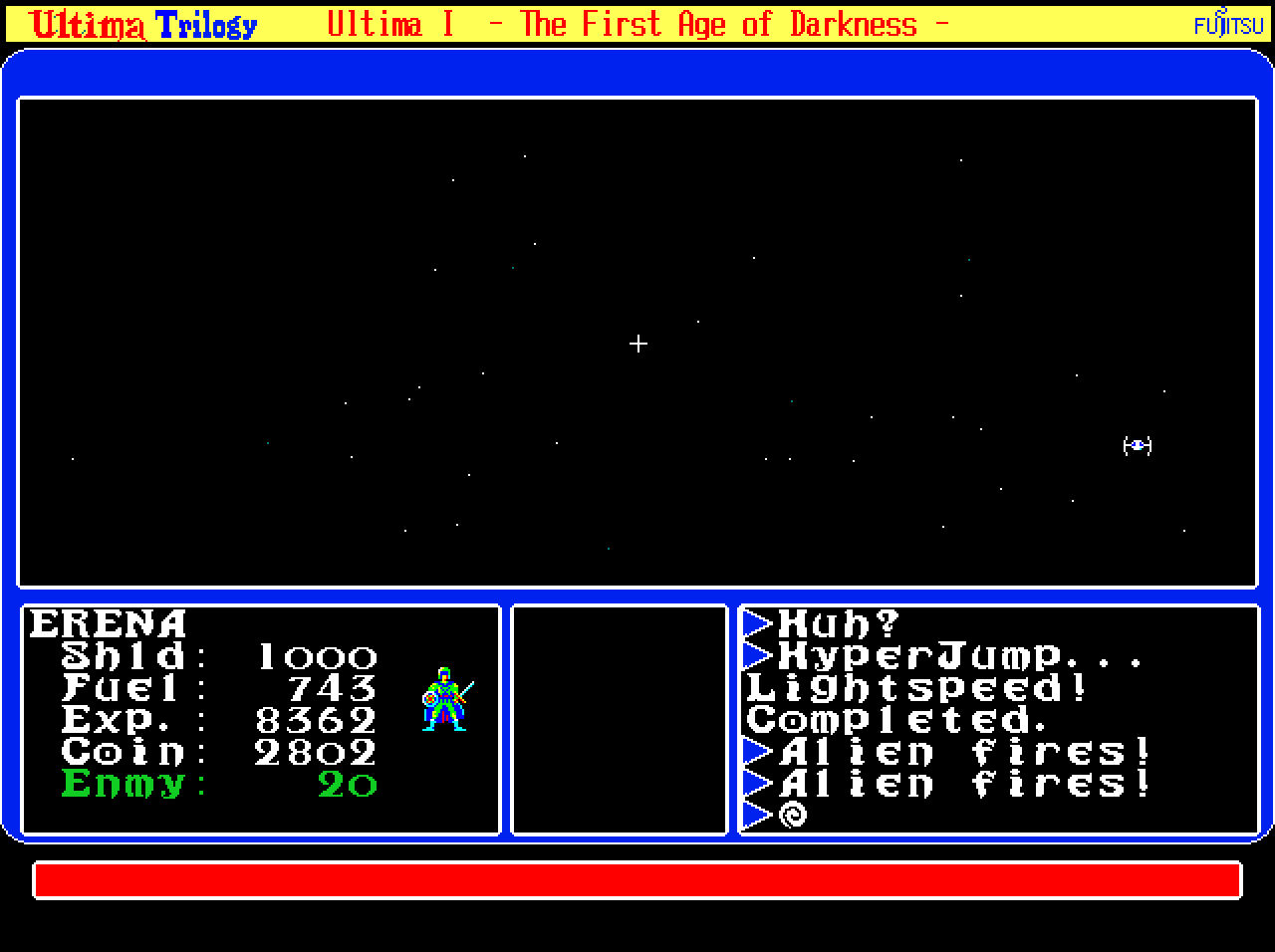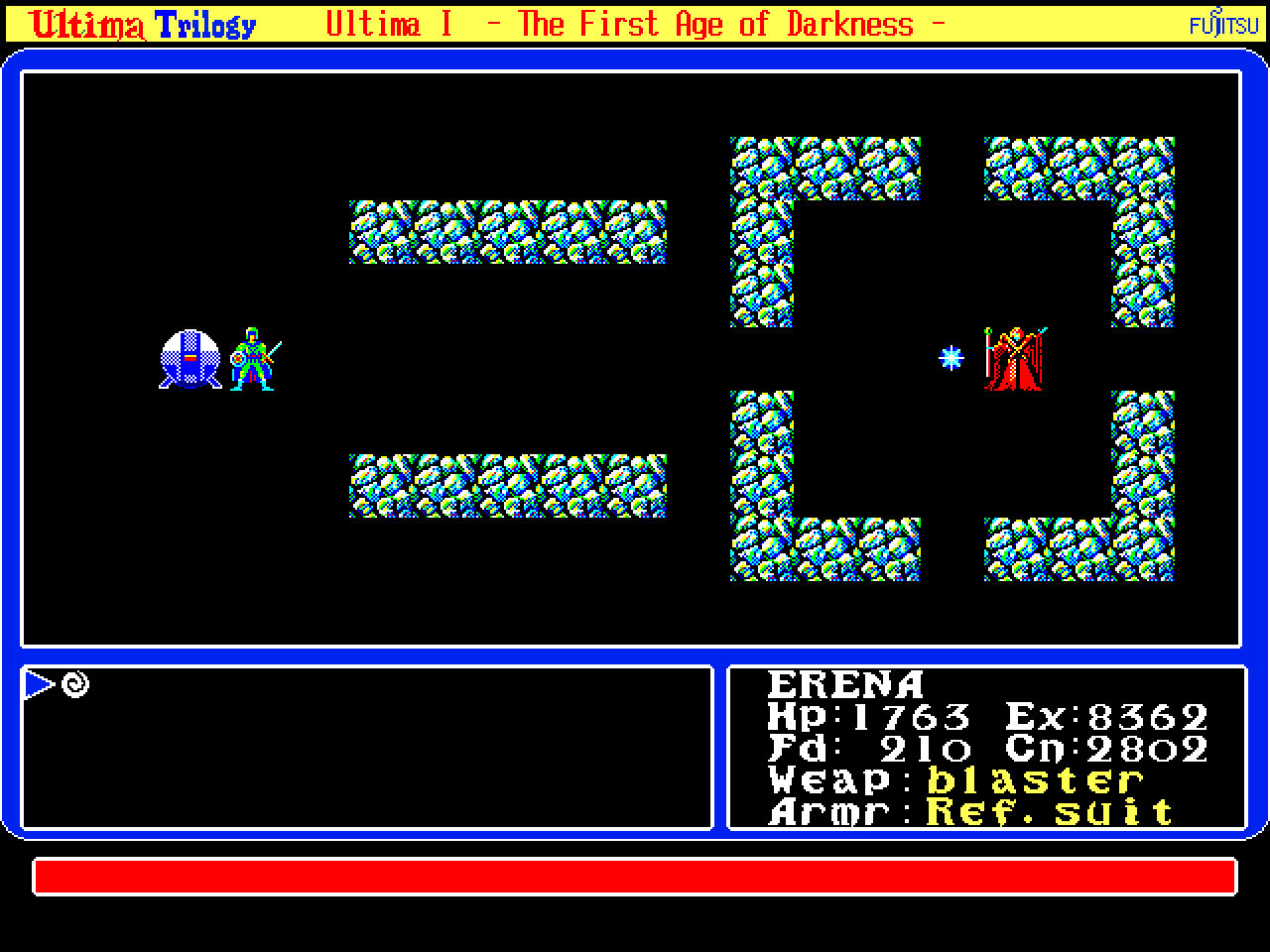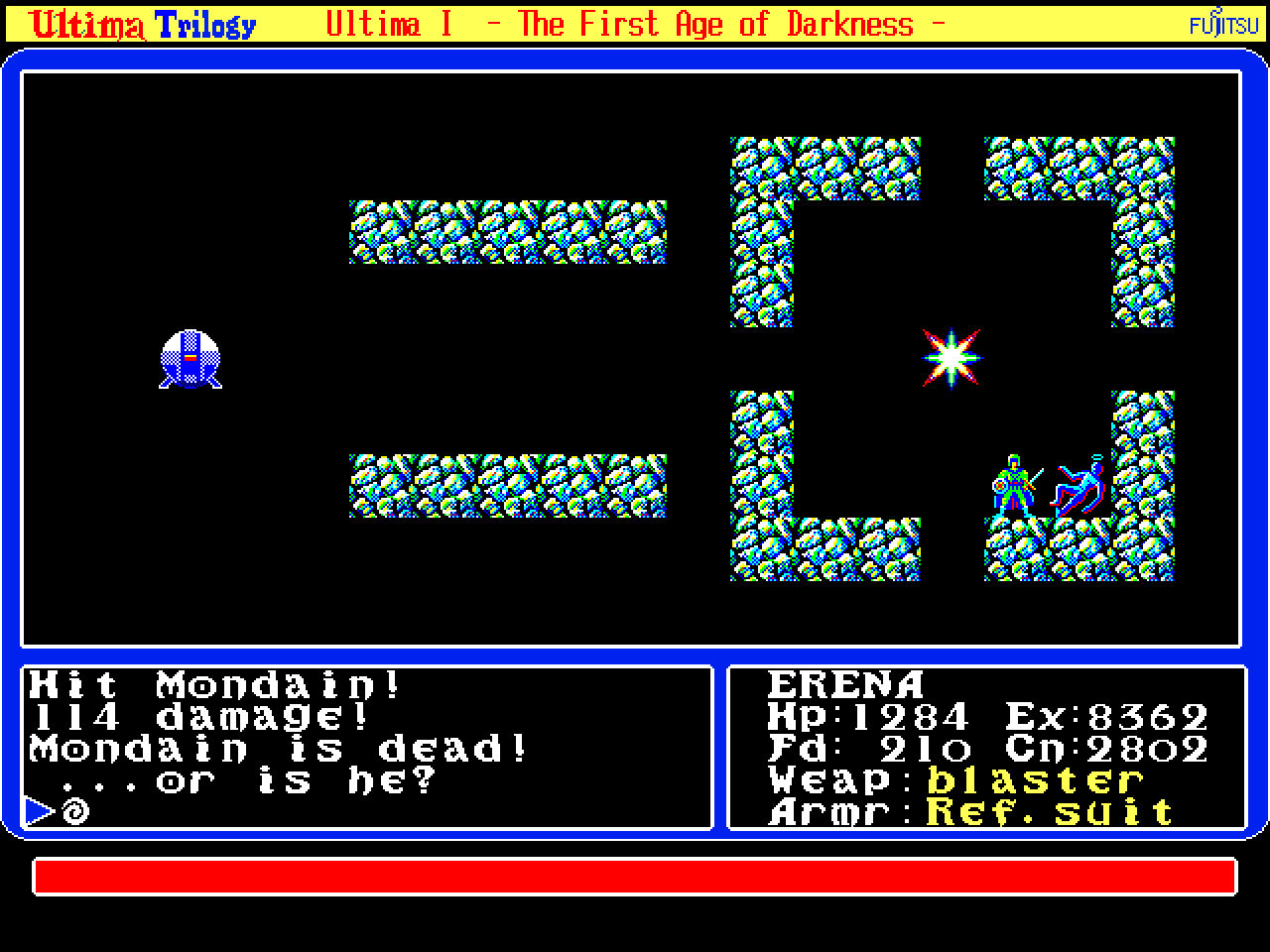I confess: I have a special place in my heart for Japanese games from the ’80s and early ’90s. I just love their anime like aesthetics and different take on some genres. Usually, I must wait for an unofficial translation or play those that received an international release, but fortunately for us today’s game has an official English localization: Ultima I: the first age of darkness, released in 1990 by Fujitsu, alongside Ultima 2 and 3 on the “Ultima Trilogy I II III” for the FM Towns line of computers.
The FM Towns is a personal computer produced by Fujitsu from 1989 to 1997. It was commercialized only in Japan and had a few revisions with different hardware, including a console variant, the FM Towns Marty, arguably the first 32-bit console. For the time, they were good machines and very capable on the multimedia and gaming aspects.
Interesting Japanese computers aside, is this release a graphical update or a true overhaul? Let’s find out.
Picture taken from the IPSJ Computer Museum website. What a beautiful bad boy!
Emulating
Unfortunately, even if I want to have one of these machines at my disposal, that’s not feasible, so I decided to go through the emulation route. Initially I tried the machine’s most well-known emulator, Unz. Thanks to its overwhelming interface, I preferred to read some writeups on how to configure it before playing. I found a very good one here.
However as I started the game, it had a few graphical problems right on the menu screen, what is unsurprisingly, as the author seems to have abandoned the project more than a decade ago. So I decided to use Tsugaru, a newer emulator with a very active author behind it. I could’ve also tried MAME, but I didn’t feel like setting it up for this game.
My experience with Tsugaru was seamless, as I completed Ultima I without any problems or jarring sound or visual glitches. Honestly, the only visual glitch I think I’ve encountered was invisible force fields inside dungeons. I believe it’s an emulation issue since the original game shows them, but I can’t be certain.
Many FM Towns games require a user disk to save data. Ultima is one of these games, since it is necessary that you save your character before you can start your playthrough. Usually, you just need a blank floppy or one that has enough space left, but since Tsugaru, unlike Unz, can’t create blank disk images (and I couldn’t load the image created by Unz), I had to find a blank diskette image. You can download one on the developer’s website where it says “Creating an FM Towns Emergency Boot Disk” section.
So, going back to the original question, is this release a graphical update or a true overhaul? Unfortunately, this is just an upgrade on the game’s sound and visuals, but it still plays as if we were in 1981, with all the problems that made me dislike it. On a brighter note, I think Ultima 1 grew on me, as I don’t find most of its design bothersome anymore. I even felt some joy killing all required monsters in one mad dash through a dungeon. It was quite fun to attempt it a few times before finally accomplishing the feat.
Even if we are emulating a computer, you don’t need to install the OS or the game, so after the emulator boots directly from the CD-ROM image you can choose between one of the first three Ultima’s titles. You can also watch their exclusive openings. Unlike the game, the introductions don’t have English text, but you can read a translation here.
The default processor speed will make the game play too fast, what becomes very noticeable during the space section, since docking your ship will be impossible. It’s best to adjust it to 16 MHz or even 8 MHz if you’re having trouble.
The game
After creating a character that will be stored on your user disk, you can finally start to explore the world of Sosaria in all its overhauled glory. Graphically the game looks great, with simple, yet charming sprites. They have basic animations (moving arms, breathing fire), but nothing complex like a full walk cycle, making you feel you’re back to the early ’80s. Cities, castles and dungeons are what you would expect from RPGs from the early ’90s. As for enemies, thankfully they were completely revamped and are represented by some nice artwork instead of wire frames.
The soundtrack isn’t very varied, as it consists of only seven songs that are fine for playing the game, but you probably won’t listen to them during your spare time.
Similar to my former experiences with this game, I enjoyed what it initially offers the player, like exploring towns, acquiring money, improving my character attributes, stealing from kings, eavesdropping rumors and getting drunk on the inn.
One change I disliked is that cities and castles now looked zoomed in, so you can’t see all their layout like on the original game. It’s not a real problem, but it’s a bit annoying to search for a specific store or deposit instead of going there directly.
Everything was fine, but then the space section starts and all my dislike for Ultima 1 came back. It is the less improved element of the game, hardly looking better than the DOS version. I spent almost 30 minutes trying to become a space ace, and finally, after I accomplished this incredible feat of patience, I returned to the Sosarian Solar system and died, as I forgot that I needed to use the space shuttle to enter the planet’s atmosphere without immolating my character.
After some moments of rage and despair, I went back to the game and finished this hateful section. This is a clear example of padding that could’ve been updated or thrown out without any damage.
The final stages of the game play like the original release. You will free a princess and if you have all the requirements, you will gain access to the time machine to ultimately face the evil Modain. After an easy fight, you will be compensated with a wall of text describing the ending. This left me disappointed, as I thought the developers would give it the same treatment the introduction received.
Final Thoughts
As I finished my Ultima 1 review, I stated that the game badly needed a remake, since I felt it was held back by technology and by a few outdated design ideas. Unfortunately, the FM Towns release only updated the game’s visual and audio, without any other changes. That is its biggest fault, since it was possible to incorporate newer gameplay developments or to improve its most obsolete aspects. Still, even if it’s not the easiest version to find, probably it’s the best way to experience Ultima 1, as it still keeps all the elements from the original game in an unadulterated form with better graphics and sound.
Final opinion: not recommended, since it’s the same game as the original, it’s also not cheap or easy to come by. Finally, it requires access to an obscure machine, or that you fiddle with emulators.

